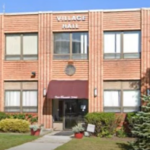LATHAM – New York is inching dangerously close to having 50 percent of its families lacking sufficient income and resources for housing, food, child care, transportation and health care, according to a report released today by United Way of New York State.
In the last two years, United Ways in 16 states have participated in ALICE, which stands for – Asset Limited, Income Constrained, Employed – to place a spotlight on a growing population of residents who are working, but struggle to afford basic necessities.
“Our report shows that this is not an urban or rural issue – it affects every corner of our state,” said Brian Hassett, CEO of the United Way of the Greater Capital Region. “Too many New Yorkers find themselves above the poverty line but below the economic line that allows them to provide health care and educational advantages for their children, and to save for their own future.”
In Westchester, Putnam and Rockland counties, the number of residents who fall into this category is startling, said Alana Sweeny, President and CEO of United Way Westchester Putnam and Mimi Vilord, President and CEO of United Way Rockland County.
In Westchester, 24 percent of the 342,557 households fell into the ALICE category with another 10 percent falling below the poverty line. In Rockland, 31 percent fell into the ALICE category. And an additional 11 percent fell below the poverty line. In Putnam, 28 percent fell into the ALICE category and an additional 5 percent of the population there fell below the poverty line. Households that fell into the ALICE category are those that earn above the poverty level up to a maximum of $77,892 in Westchester and $77,724 in Rockland and Putnam for a family of four: two adults, one pre-school child and one infant.
“That means that nearly a third of the people living in these three counties – among the most affluent counties in the nation – are living paycheck to paycheck with no emergency savings,’’ said Sweeny. “The high cost of housing and childcare eat into their incomes. You would think that someone with a $70,000-a-year plus income would be doing well, but not here. They are one flat tire, one illness away from financial disaster. And this cuts across all ethnic and age groups.’’
Vilord said that a recent mental health study conducted by the Rockland County government showed that stressors like lack of income contributed to domestic violence, substance abuse and other mental health problems.
“We are talking about people who are the fabric of our society: our daycare workers, bus drivers, cafeteria workers, and they can’t make ends meet,’’ she said. “These stresses are causing serious problems for these families.’’
She added, that these problems result in negative consequences not just for ALICE households, but for the broader community such as higher taxes and rising insurance premiums.
To help connect ALICE and other struggling families highlighted in the report to services, Sweeny and Vilord said the local United Ways as of January 1 would be extending the hours of their 2-1-1 call center from the current 9 a.m. to 7 p.m. to 8 a.m. to 9 p.m. The free, confidential, multilingual information and referral helpline is open 365 days a year. Specialists speak with callers from throughout the area who need help with food assistance, elder care, housing and shelters, utilities, abuse prevention, suicide, recycling regulations, foster parenting, veteran services, medical assistance and more. They hope to eventually make the service available 24 hours a day, 7 days a week.
In addition, both United Way Westchester Putnam and United Way Rockland County will be creating separate task forces in their counties to address issues like housing, childcare and transportation that are barriers to success for ALICE families.
“This report gives us the information we need to take a closer look at how we can attack this problem,’’ said Sweeny. “We will be creating a task force of government, business and non-profit agencies to see if we can find some solutions.’’
The ALICE report uses data from a variety of sources, including the U.S. Census and the American Community Survey, to provide tools that quantify the number of households in New York’s workforce that are struggling financially.
The New York ALICE Report reveals:
2.1 million households in NYS have incomes above the poverty level but below the ALICE threshold budget for survival. With an additional 1.1 million households below the poverty line, 44% of New York households can no longer afford all of life’s basic necessities: food, shelter, child care, transportation and health care.
To meet New York’s average ALICE threshold for survival, a single adult needs an annual income of $20,496 or $10.25/hour. Yet nearly 1 million New Yorkers who work in retail sales, restaurants and home health services are paid below the ALICE threshold.
From 2007 to 2014, the cost of housing, food and health care in New York far exceeded the rise in salaries, thus increasing the number of ALICE households. The report’s town-by-town breakdown shows that ALICE exists statewide among all age groups, household types, and racial and ethnic groups.
ALICE families face a variety of challenges: low-wage jobs located far from their homes (with the attendant rise in transportation costs); and having few or no assets to cushion the cost of an unexpected health emergency or caregiving need, and limiting the opportunities for their children.
The ALICE Report recommends both short-term and long-term strategies to help ALICE families and strengthen our communities. The ALICE Report will be used by United Ways around the state, in conversation with our many partners and supporters, to understand ALICE’s circumstances better, and find better ways to help ALICE.







